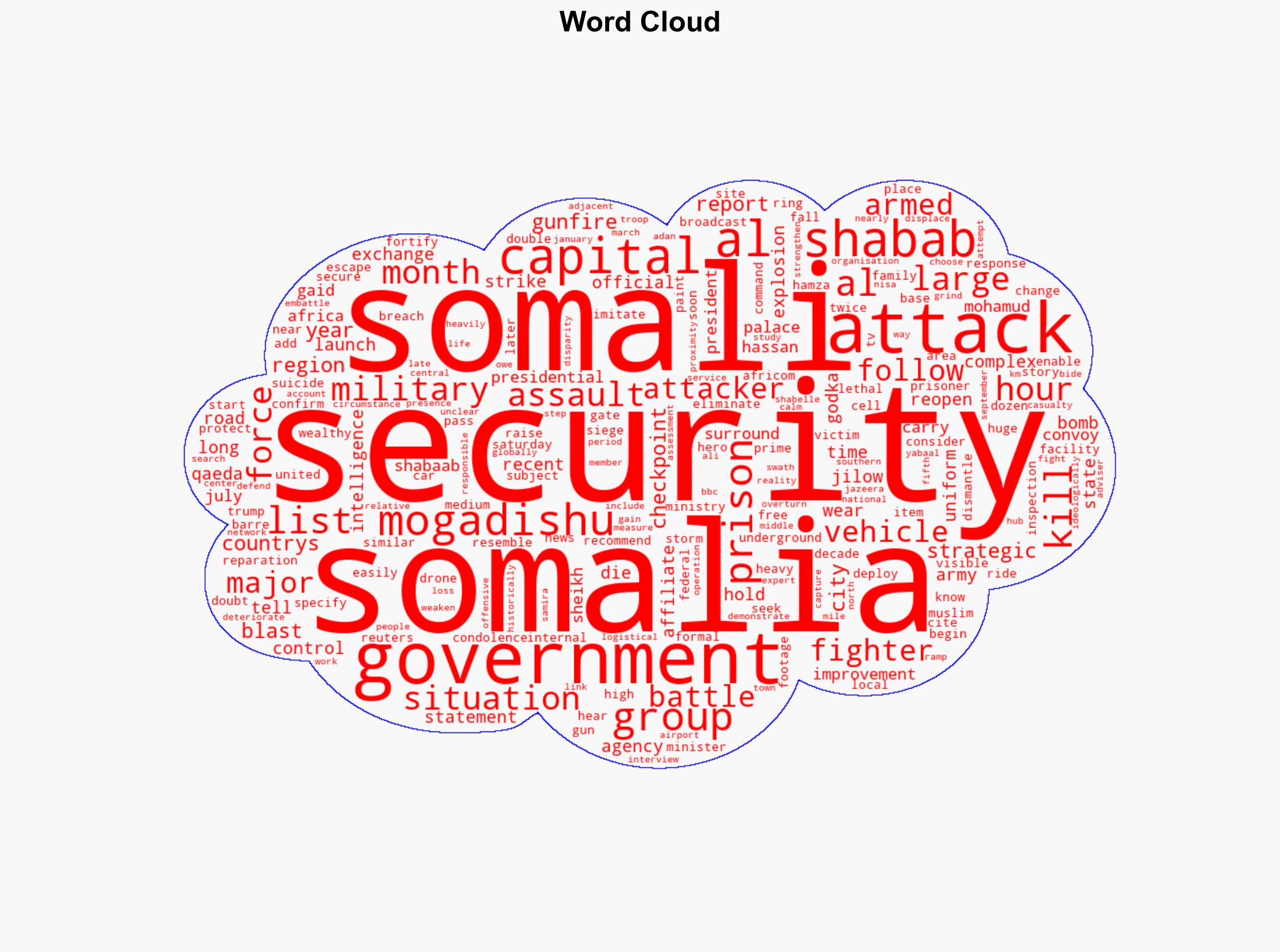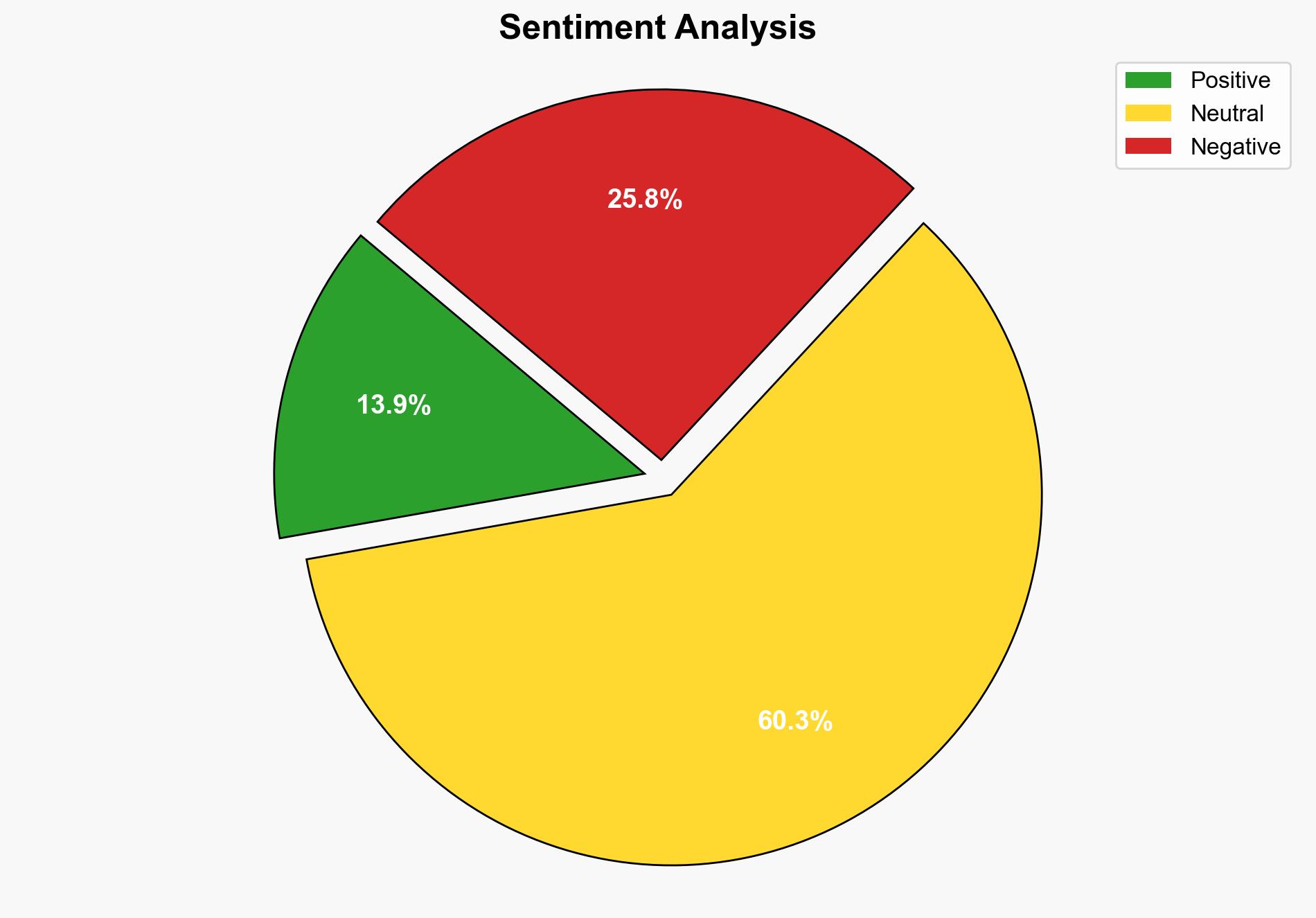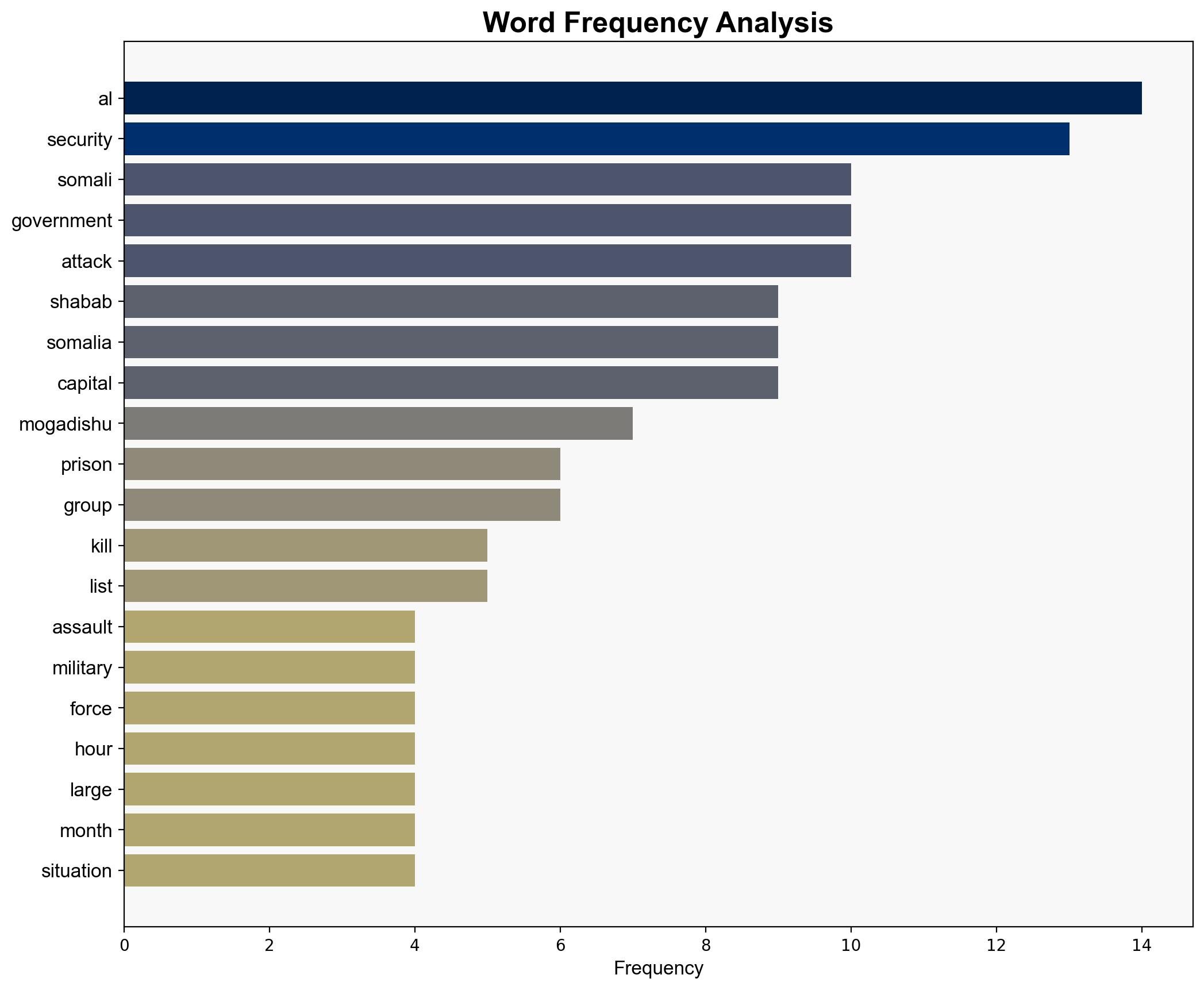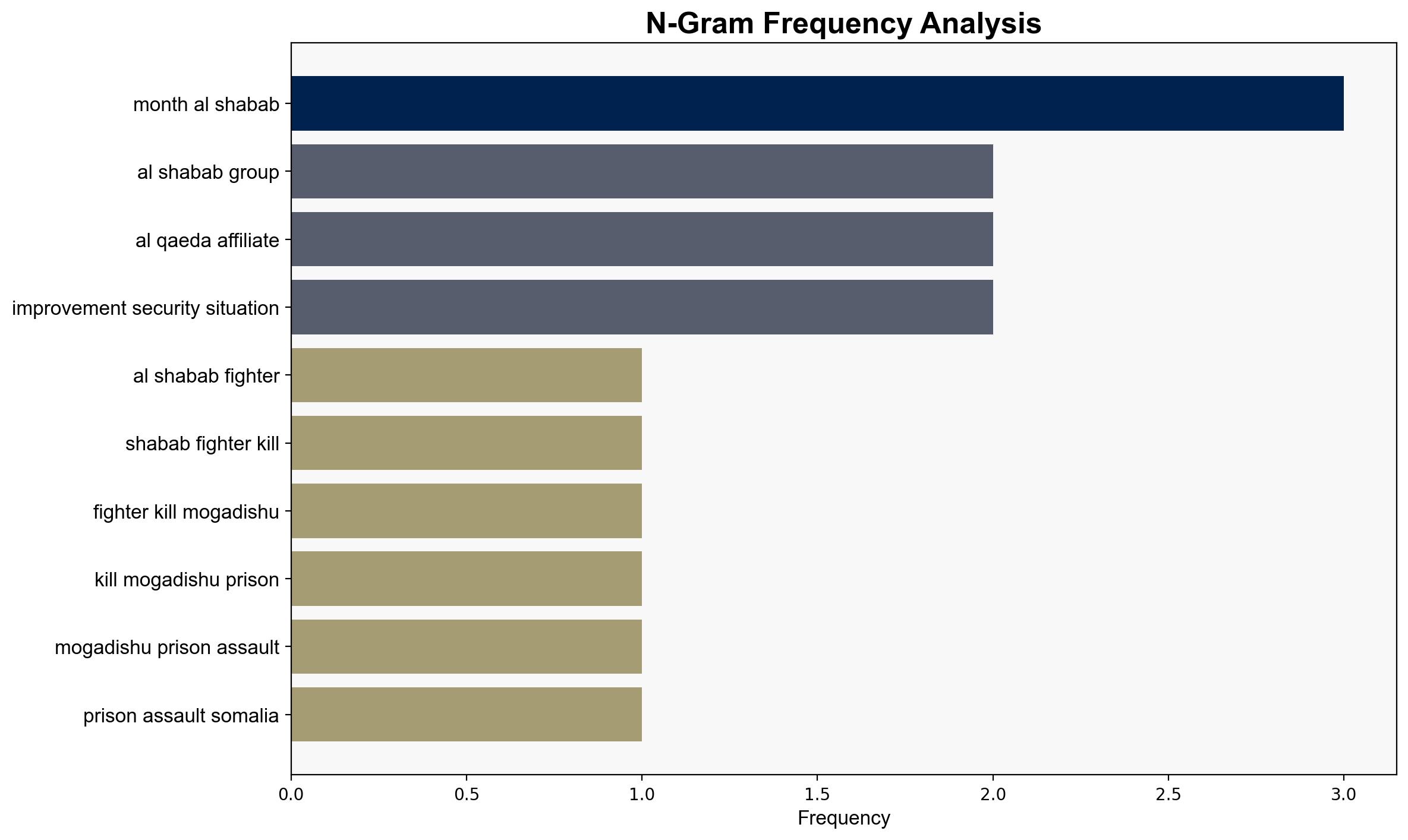Al-Shabab fighters killed in Mogadishu prison assault Somalia confirms – Al Jazeera English
Published on: 2025-10-05
Intelligence Report: Al-Shabab fighters killed in Mogadishu prison assault Somalia confirms – Al Jazeera English
1. BLUF (Bottom Line Up Front)
The most supported hypothesis is that the Al-Shabab attack on the Mogadishu prison was a strategic move to undermine the Somali government’s perceived security improvements and to free imprisoned members. Confidence level: Moderate. Recommended action: Enhance intelligence-sharing and security measures around key infrastructure and personnel to prevent future attacks.
2. Competing Hypotheses
Hypothesis 1: The attack was primarily aimed at freeing Al-Shabab prisoners and demonstrating the group’s operational capabilities within Mogadishu, countering claims of improved security by the Somali government.
Hypothesis 2: The attack was a diversionary tactic to draw attention away from other strategic objectives, such as regrouping or launching operations in other regions of Somalia.
Using ACH 2.0, Hypothesis 1 is better supported due to the direct assault on a prison known to hold Al-Shabab members, the use of military uniforms to bypass security, and the timing coinciding with government claims of improved security.
3. Key Assumptions and Red Flags
Assumptions include the belief that Al-Shabab’s primary goal was to free prisoners and that the Somali government’s security improvements are genuine. Red flags include the lack of detailed casualty figures and the possibility of insider assistance. The absence of specific information on the attackers’ identities raises questions about potential infiltration.
4. Implications and Strategic Risks
The attack highlights vulnerabilities in Mogadishu’s security infrastructure, potentially emboldening Al-Shabab and other groups. It risks undermining public confidence in the government’s ability to maintain security, potentially destabilizing the region further. The incident could lead to increased recruitment and support for Al-Shabab if perceived as a successful operation.
5. Recommendations and Outlook
- Enhance surveillance and intelligence-sharing among regional and international partners to preempt similar attacks.
- Strengthen security protocols at key facilities, including regular audits and drills.
- Scenario-based projections:
- Best Case: Improved security measures prevent future attacks, stabilizing the region.
- Worst Case: Continued attacks lead to significant destabilization and increased influence of Al-Shabab.
- Most Likely: Sporadic attacks continue, challenging the government’s security narrative.
6. Key Individuals and Entities
Al-Shabab, Somali government, Hassan Sheikh Mohamud (Somali President), Hamza Barre (Prime Minister).
7. Thematic Tags
national security threats, counter-terrorism, regional focus, insurgency, intelligence operations





